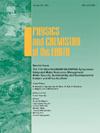印度一条亚热带河流在可变自然和人为控制下的蜿蜒行为扰动
IF 3
3区 地球科学
Q2 GEOSCIENCES, MULTIDISCIPLINARY
引用次数: 0
摘要
在人类世,河曲形态在一定程度上受到人类干预的影响。为此,本研究旨在调查过去 50 年(1970-2020 年)印度亚热带河流科派河的蜿蜒行为,包括其变形。研究选取了四条河流的上游、中上游、中下游和下游共 394 个河圈(1970 年和 1995 年各 134 个河圈,2020 年 126 个河圈)。使用穆勒蜿蜒度指数(SI)、蜿蜒形态指数、蜿蜒形状指数和半径/波长比对蜿蜒行为进行了评估。研究发现,受河道水力学和地形因素的控制,下游和上游的蜿蜒趋势较强。然而,中游则相对稳定。中游的蜿蜒环流以规则蜿蜒型为主,但下游超过 50%的蜿蜒环流为强烈蜿蜒型。正延伸是所有河段蜿蜒变形的主要类型。但是,在中上游和下游发现的负延伸很少,而只有在下游发现了不规则变化和截断。因此,上游和下游表现出更多的自然控制,点缀着有规律的蜿蜒进展。中游的布格尔异常较高,基底坡度陡峭,导致河道受限。此外,大量的采砂和砖窑工业通过人为的河道拉直扰乱了河曲形态,使中游的河曲演变相形见绌。本文章由计算机程序翻译,如有差异,请以英文原文为准。

Perturbation in meander behaviour of a subtropical river in India under variable natural and anthropogenic controls
Meander morphology is perturbed worldwide by human interventions to a certain extent in the Anthropocene. To this end, the present study aims to investigate the meander behaviour, including its deformations, of the Kopai River, a subtropical river in India in the last 50 years (1970–2020). A total of 394 loops (134 loops each in 1970 and 1995 and 126 loops in 2020) were selected for the four river reaches – the upper, middle-upper, middle-lower, and lower reaches. The meandering behaviour was assessed using Mueller's sinuosity index (SI), meander form index, meander shape index, and radius/wavelength ratio. The study found a higher meandering tendency in the lower and upper reaches controlled by fluvial hydraulics, and topographic factors. However, the middle reaches were comparatively stable. The meander loops along the middle reaches regular meander is the dominant meander type, however, more than 50% of meander loops for the lower reaches were intense meander types. Positive extensions were the predominant type of meander deformation in all the reaches. However, few negative extensions are found in the middle-upper and lower reaches, while irregular changes and cut-offs were only found in the lower reach. Thus, the upper and lower reaches exhibited more natural controls dotted with regular meander progression. The middle reaches characterized by higher Bouguer anomaly and steep basement gradient led to channel confinement. Besides, profuse sand mining and the brick kiln industries are perturbing the meander beahviour through human channel straightening, dwarfing the meander evolution in the middle reaches.
求助全文
通过发布文献求助,成功后即可免费获取论文全文。
去求助
来源期刊

Physics and Chemistry of the Earth
地学-地球科学综合
CiteScore
5.40
自引率
2.70%
发文量
176
审稿时长
31.6 weeks
期刊介绍:
Physics and Chemistry of the Earth is an international interdisciplinary journal for the rapid publication of collections of refereed communications in separate thematic issues, either stemming from scientific meetings, or, especially compiled for the occasion. There is no restriction on the length of articles published in the journal. Physics and Chemistry of the Earth incorporates the separate Parts A, B and C which existed until the end of 2001.
Please note: the Editors are unable to consider submissions that are not invited or linked to a thematic issue. Please do not submit unsolicited papers.
The journal covers the following subject areas:
-Solid Earth and Geodesy:
(geology, geochemistry, tectonophysics, seismology, volcanology, palaeomagnetism and rock magnetism, electromagnetism and potential fields, marine and environmental geosciences as well as geodesy).
-Hydrology, Oceans and Atmosphere:
(hydrology and water resources research, engineering and management, oceanography and oceanic chemistry, shelf, sea, lake and river sciences, meteorology and atmospheric sciences incl. chemistry as well as climatology and glaciology).
-Solar-Terrestrial and Planetary Science:
(solar, heliospheric and solar-planetary sciences, geology, geophysics and atmospheric sciences of planets, satellites and small bodies as well as cosmochemistry and exobiology).
 求助内容:
求助内容: 应助结果提醒方式:
应助结果提醒方式:


